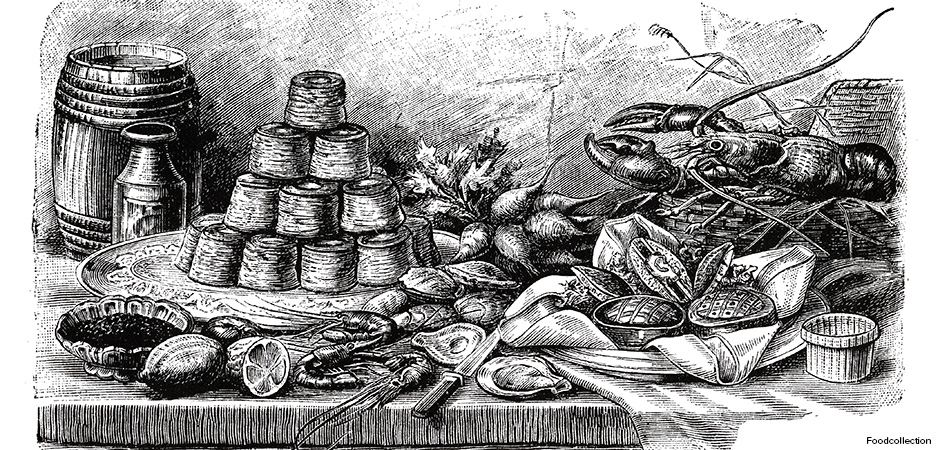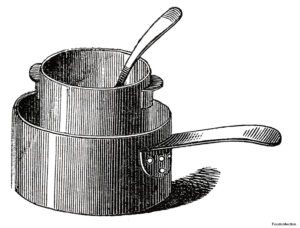
African American chefs have had a major impact on American food. Many of today’s popular food preparations, from delicious dinners to tasty treats, were developed by enslaved and free African Americans who lived there. However, most of these great chefs are unknown, and their important contributions have not received due credit.
In 2000, though, a book dealer found a rare cookbook that has provided more evidence of the influence of African American chefs. Published in 1866, Malinda Russell’s A Domestic Cookbook: Containing a Careful Selection of Useful Receipts for the Kitchen is the first known cookbook to be published by an African American woman.
Below, btw takes a closer look at Russell, her cookbook, and its importance to history.
Who was Malinda Russell?
Malinda Russell was born a free woman in Tennessee in the early 1800s. She was descended from a family of enslaved people. At 19 years old, Russell left Tennessee for a journey that was supposed to end in Liberia, a West African country established by the American Colonization Society for free and emancipated African Americans. However, Russell was robbed by members of her traveling group. This forced her to settle in Lynchburg, Virginia. There, she learned to cook from an enslaved woman named Fanny Steward. Russell married, had a son, and established herself in Lynchburg as a cook and nurse. But tragedy struck when her husband died after just four years of marriage.

Russell then returned to Tennessee to support herself and her son. First, she ran a boardinghouse near Chuckey Mountain. A few years later, she opened a pastry shop in nearby Greeneville. Russell’s pastries sold so well that she was able to save what she deemed to be a considerable sum of money. However, she was robbed again, this time by people she described as a “guerrilla party” who threatened her life if she revealed who they were. So, in 1864, Russell moved north with her son, and settled 600 miles from Tennessee in Paw Paw, Michigan. It was there that she published her cookbook. Her goal was to make enough money from its sales to return to Tennessee and recover some of her stolen property.
What is in Russell’s Cookbook?
The cookbook is 39 pages and features 250 recipes for food and home remedies. The first 10 pages are exclusively cakes, including yummy-sounding Sugar Drop Cake and Queen’s Party Cake. Russell details how to bake many other desserts, including cookies, custards, puddings, pies, jams, and sweet rolls. She also shares savory recipes for chicken, beef, ham, and fish. Interestingly, Russell also provides advice for curing toothaches, body aches, and burns. She even describes ways to make cologne, shampoo, and hair dye.
Russell credited Fanny Steward and Mary Randolph’s Virginia Housewife cookbook as the foundation of her cooking skills. Russell also says in the cookbook’s introduction that she expected it to sell well. However, subsequent fires in Paw Paw destroyed most copies of her cookbook. (Historians have not been able to learn more about her life beyond what is written in the cookbook’s introduction. These fires also might have burned the rest of Russell’s personal records.)
Nearly 140 years after its publication, though, a West Coast book dealer discovered Russell’s cookbook at the bottom of a box of other materials. It is the only known copy to exist. The cookbook was acquired by Jan Longone, a rare book dealer and cookbook expert, who donated it to the University of Michigan. The original cookbook can be viewed online.
Why is Russell’s Cookbook Important?
The discovery of Russell’s cookbook is important for many reasons. Practically, her recently found recipes have been enjoyed by many people, some of whom even have had parties featuring Russell’s food. More than that, though, the cookbook provides another direct example of how African Americans have helped to create foods that we love today. Modern chefs who have examined the recipes are impressed by the range of Russell’s culinary expertise. Russell’s recipes include spices and styles of traditional Southern dishes, many of which were influenced by West African cultures and passed down through free and enslaved African American families in the United States. But she also features her takes on European delicacies.
Russell’s cookbook provides an opportunity for historians, educators, and students to add her contributions to those of other African American chefs. For example, James Hemings was the French-trained enslaved chef of Thomas Jefferson who introduced macaroni and cheese, hard ice cream, and french fries to the United States. Hercules Posey, George Washington’s enslaved chef, cooked for dignitaries in the presidential mansion. Other African Americans in the 1800s published cookbooks that offer insight into the times and provide a food lineage to today. Two other African Americans, Robert Roberts and Tunis Campbell, wrote housekeeping guides in 1827 and 1848, respectively, that included food recipes. Abby Fisher, a formerly enslaved woman, authored a book on Southern cooking in 1881 after Russell’s cookbook was published. This research adds these African Americans to the fabric of United States’ food history. As a bonus, it can give you something good to eat for your next meal!
